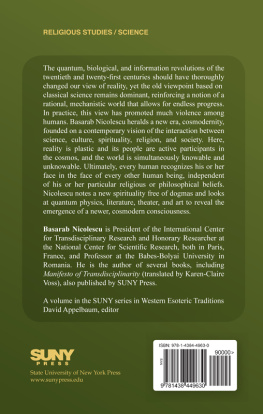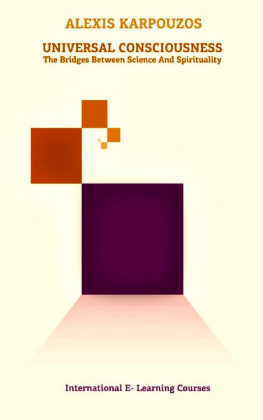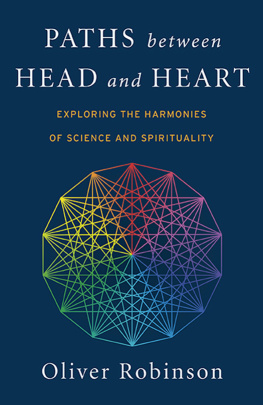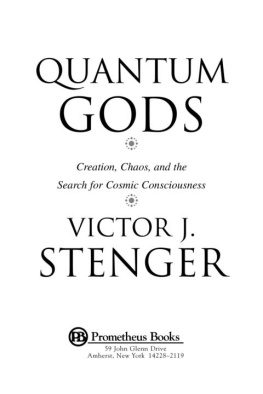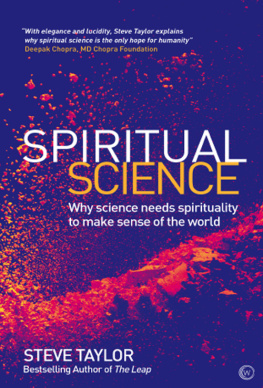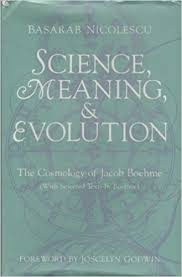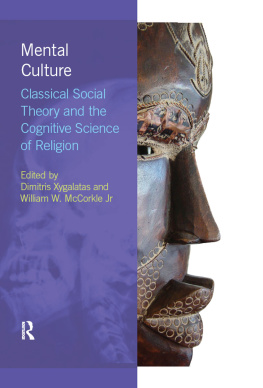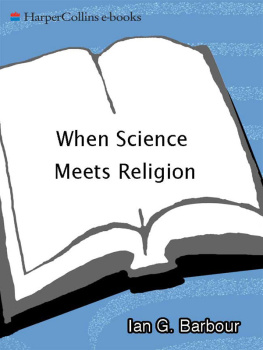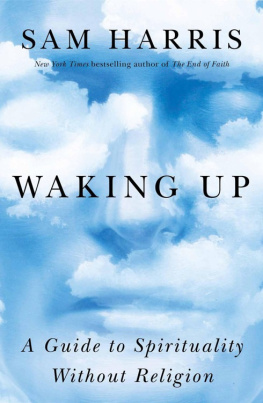FROM MODERNITY TO
COSMODERNITY
SUNY series in Western Esoteric Traditions
David Appelbaum, editor
FROM MODERNITY TO
COSMODERNITY
Science, Culture, and Spirituality
BASARAB NICOLESCU
S TATE U NIVERSITY OF N EW Y ORK P RESS
Published by
S TATE U NIVERSITY OF N EW Y ORK P RESS , A LBANY
2014 State University of New York
All rights reserved
Printed in the United States of America
No part of this book may be used or reproduced in any manner whatsoever without written permission. No part of this book may be stored in a retrieval system or transmitted in any form or by any means including electronic, electrostatic, magnetic tape, mechanical, photocopying, recording, or otherwise without the prior permission in writing of the publisher.
For information, contact
State University of New York Press, Albany, NY
www.sunypress.edu
Production, Laurie D. Searl
Marketing, Fran Keneston
Library of Congress Cataloging-in-Publication Data
Nicolescu, Basarab.
From modernity to cosmodernity : science, culture, and spirituality / Basarab Nicolescu.
pages cm. (SUNY series in western esoteric traditions)
Includes bibliographical references and index.
ISBN 978-1-4384-4963-0 (hardcover : alk. paper)
1. Reality. 2. Complexity (Philosophy) 3. Religion and science. I. Title.
BD331.N488 2014
110dc23
2013006675
10 9 8 7 6 5 4 3 2 1
CONTENTS
CHAPTER ONE
FROM SHATTERED CULTURE TOWARD TRANSCULTURE
CHAPTER TWO
CONTEMPORARY PHYSICS AND THE WESTERN TRADITION
CHAPTER THREE
THE GRANDEUR AND DECADENCE OF SCIENTISM
CHAPTER FOUR
THE VALLEY OF ASTONISHMENT: THE QUANTUM WORLD
CHAPTER FIVE
THE ENDLESS ROUTE OF THE UNIFICATION OF THE WORLD
CHAPTER SIX
THE STRANGE FOURTH DIMENSION
CHAPTER SEVEN
THE BOOTSTRAP PRINCIPLE AND THE UNIQUENESS OF OUR WORLD
CHAPTER EIGHT
COMPLEXITY AND REALITY
CHAPTER NINE
THE HUMAN BEING: THE MOST PERFECT OF ALL SIGNS
CHAPTER TEN
BEYOND DUALISM
CHAPTER ELEVEN
THE PSYCHOPHYSICAL PROBLEM
CHAPTER TWELVE
FROM THE QUANTUM WORLD TO IONESCOS ANTITHEATER AND QUANTUM AESTHETICS
CHAPTER THIRTEEN
THE THEATER OF PETER BROOK AS A FIELD OF STUDY OF ENERGY, MOVEMENT, AND INTERRELATIONS
CHAPTER FOURTEEN
FROM CONTEMPORARY SCIENCE TO THE WORLD OF ART
CHAPTER FIFTEEN
VISION OF REALITY AND REALITY OF VISION
CHAPTER SIXTEEN
CAN SCIENCE BE A RELIGION?
CHAPTER SEVENTEEN
THE HIDDEN THIRD AND THE MULTIPLE SPLENDOR OF BEING
LIST OF ILLUSTRATIONS
INTRODUCTION
The word reality is one of the most ambiguous words in all languages. We all think that we know what reality is, but if we were asked, we would find that there are as many meanings of this word as there are people on earth. Therefore, it is not surprising that so many conflicts continuously disturb individuals and nations: the reality of one against the reality of the other.
Under these conditions, it is almost miraculous that the human species still exists. The explanation is relatively simple: a statistical kind of faith in what reality is at some moment is created as an effect of technoscience. Thus, the dominant concept of reality during the last century was based on classical science. It used to reinforce our belief that we were living in a rational, deterministic, and mechanistic world, destined to an endless progress. The unexpected event of September 11, 2001, shattered this faith of modernity.
However, the triple revolution that spanned the twentieth centurythe quantum revolution, the biological revolution, and the information revolutionshould have thoroughly changed our view of reality. And yet, our mentalities remained unchanged. The massacre of humans by humans increased endlessly. The old viewpoint remains dominant. What is the cause of this blindness?
In this book, I assume the statement made in 1948 by Wolfgang Pauli, Nobel laureate in physics and one of the founders of quantum mechanics: the formulation of a new idea of reality is the most important and most difficult task of our time. More than sixty years later, this task remains unfulfilled. I hope that the present book makes a step forward toward the accomplishment of this task.
The contemporary growth of knowledge is without precedent in human history. We have explored otherwise unimaginable levels: from the infinitely small to the infinitely large, from the infinitely brief to the infinitely long. The sum of knowledge about the universe and natural systems accumulated during the twentieth century far surpasses all that was known during all other centuries combined. How is it that we know more about what we do and less about who we are? How is it that the accelerating proliferation of disciplines makes the unity of knowledge more and more impossible to even imagine? How is it that as the exterior universe becomes more known, the meaning of our life and of our death declines into insignificance, even absurdity? Must atrophy of interior being be the price we pay for technoscientific advance? Must the individual and social happiness that scientism first promised us recede indefinitely, like a mirage?
To be sure, the potential triple self-destructionmaterial, biological, and spiritualis the product of a blind but triumphant technoscience, obedient only to the implacable logic of utilitarianism. But how can we expect the blind to see?
Paradoxically, everything is in place for our self-destruction, but everything is also in place for positive change, just as there has been at other great turning points in history. The challenge of self-destruction has its counterpart in the hope of self-birth. The global challenge of death has its counterpart in a visionary, transpersonal, and planetary consciousness, which could be nourished by the miraculous growth of knowledge.
Of course, my practice of more than forty years in theoretical elementary particle physics is crucial in the writing of the present book. It is this experience and knowledge that led me to question the meaning of science in its interaction with spirituality. Also, the deep contact with my PhD students in transdisciplinarity at the University Babe-Bolyai from Cluj-Napoca in Romania stimulated my thinking a great deal.
I am very grateful to the Stellenbosch Institute of Advanced Study (South Africa) for a fellowship, which allowed me to dedicate all of my time to writing the present book.
I also thank Karen-Claire Voss and Andy Green for their invaluable help in correcting different versions of the manuscript and for suggestions in the clarification of some ideas. The contribution of Anamaria Brailean in the preparation of the first form of the manuscript is acknowledged.
I am most grateful to the great Spanish poetess Clara Jans for the authorization of publishing her beautiful poem The Hidden Third in the present book.
I dedicate this book to the memory of my dear friend and collaborator Paul Cilliers (19572011), professor of philosophy at Stellenbosch University and a major world figure as theorist and philosopher of complexity, who died suddenly on July 31, 2011. I am sure that he will be delighted to see this book in print, wherever he is now.

